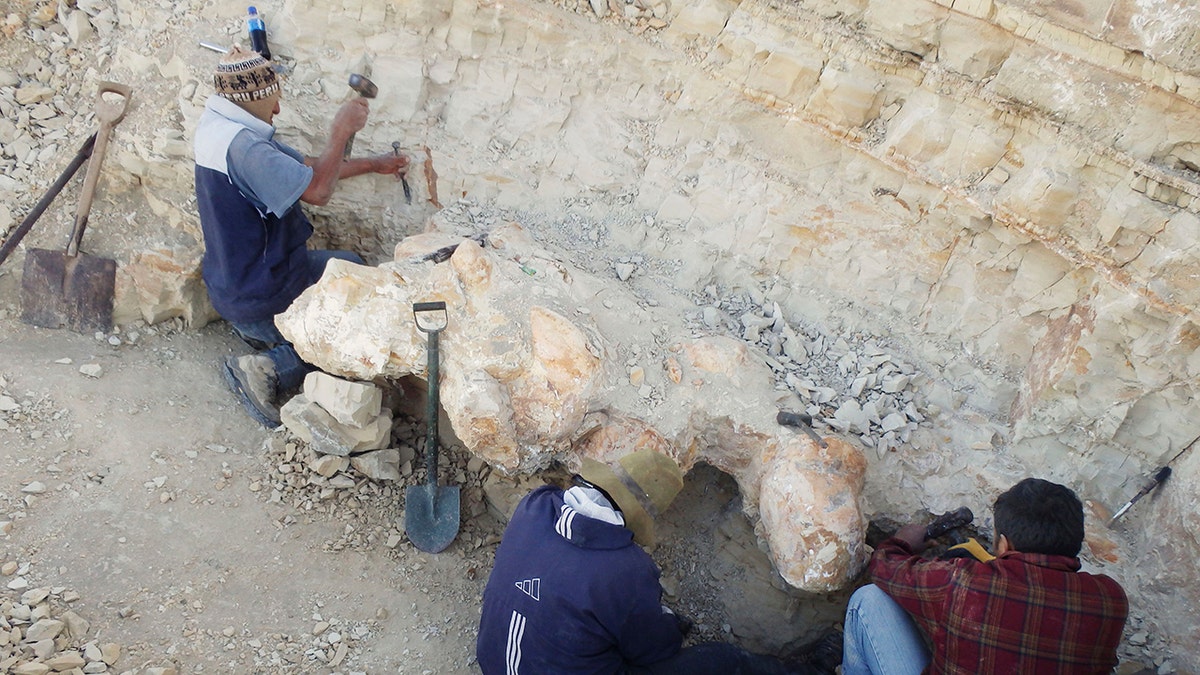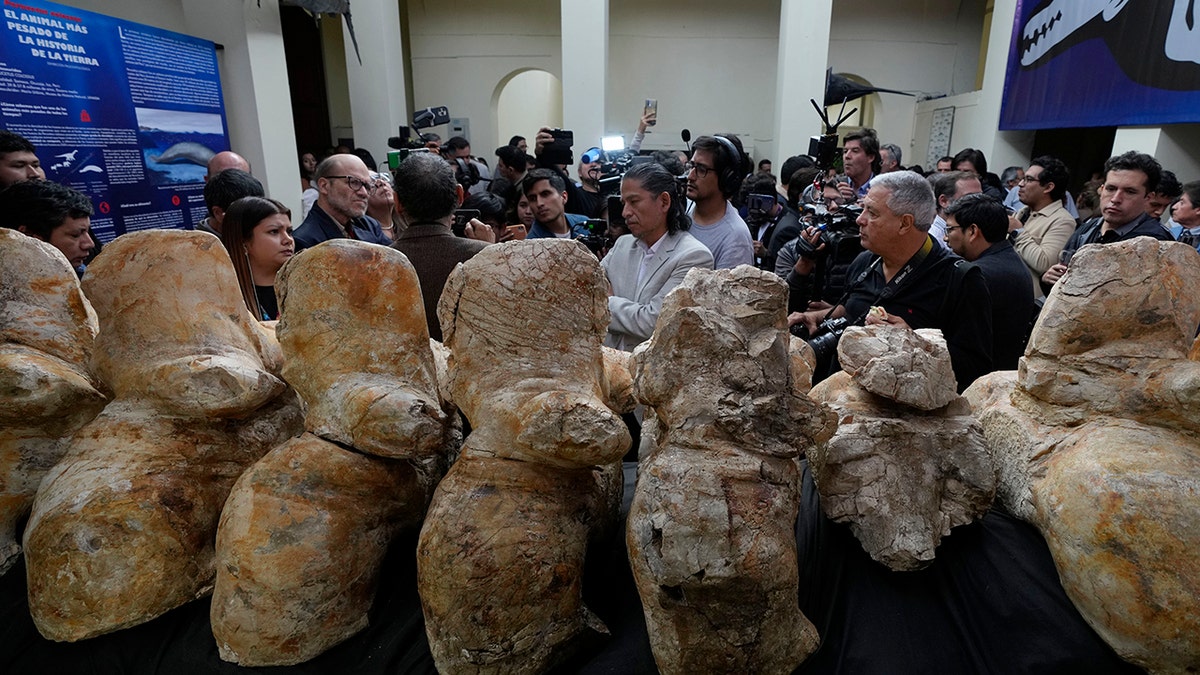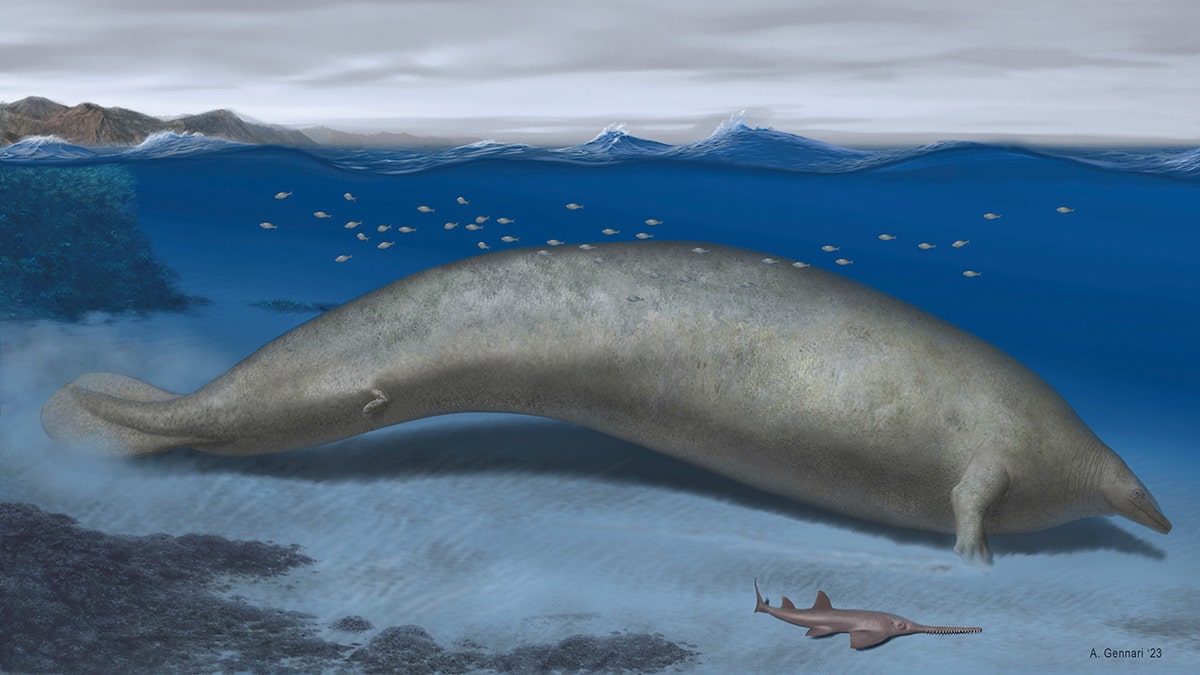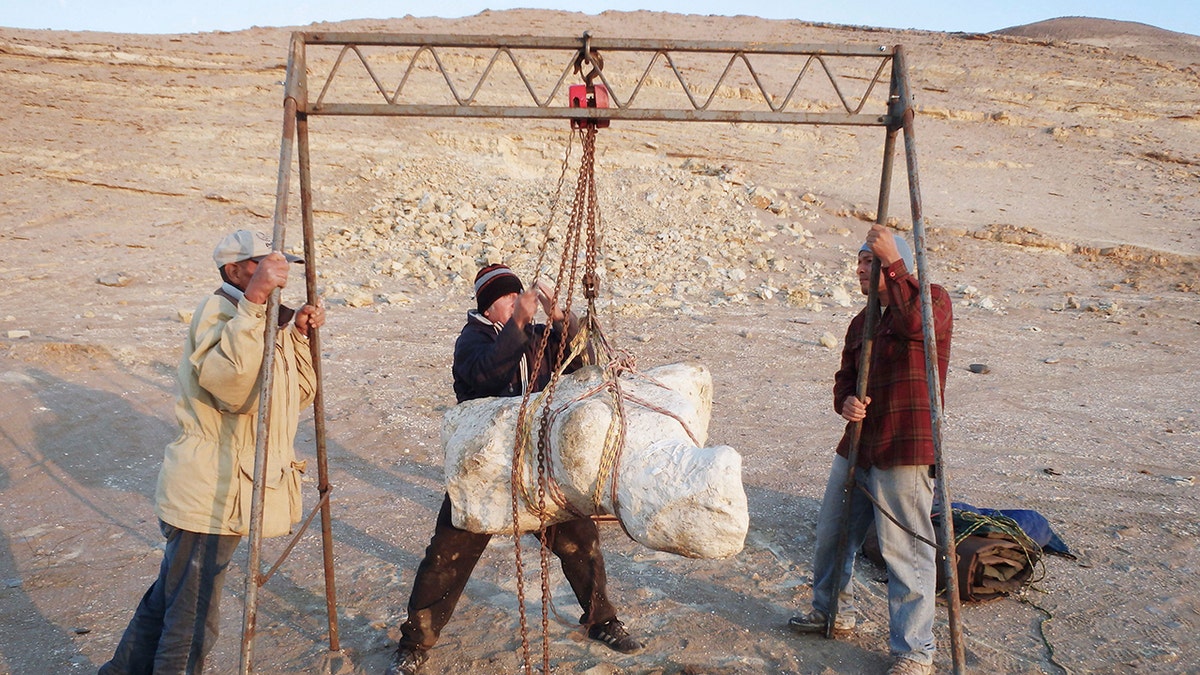Tour of the deck of boat used to find potential UFO debris in the Pacific Ocean
Harvard Professor Avi Loeb takes Fox News Digital upstairs of the boat where the fragments are studied.
The heaviest animal to have ever lived may have been an ancient colossal whale that was recently discovered in Peru, scientists said.
Scientists have been digging up massive fossils of the new species — named Perucetus colossus, or "the colossal whale from Peru" — in the Ica desert, a region in Peru that was once underwater over the past decade. The discovery was unveiled in a Nature journal published on Wednesday, Aug. 2.
According to the journal, titled "A heavyweight early whale pushes the boundaries of vertebrate morphology," researchers calculated the ancient giant weighed somewhere between 94 and 375 tons (85 and 340 metric tons). Its body stretched to around 66 feet (20 meters) long.
The Perucetus colossus was "possibly the heaviest animal ever," said study author Eli Amson, a paleontologist at the State Museum of Natural History in Stuttgart, Germany, but "it was most likely not the longest animal ever."
LAST OF NEARLY 100 WHALES BEACHED IN AUSTRALIA EUTHANIZED DESPITE MASSIVE ATTEMPTED RESCUE EFFORT

In this June 2017, photo provided by Department of Earth Sciences, University of Pisa, disarticulated vertebrae of the skeleton of Perucetus colossus is excavated by Eusebio Diaz, from left, Alfredo Martinez and Walter Aguirre, in the Ica Province, southern Peru. Scientists reported Wednesday, Aug. 2, 2023, that the creature could challenge the blue whale's title as the heaviest animal that lived on Earth. They've been digging up massive fossils from the creature in the Peruvian desert over the past decade. (Giovanni Bianucci/Department of Earth Sciences, University of Pisa, via AP)
If confirmed, the Peruvian whale would take the top spot from the blue whale, the largest of which weighs within that range at around 200 tons (180 metric tons). The blue whale can also be longer, with some growing to more than 100 feet (30 meters) in length.
"It’s just exciting to see such a giant animal that’s so different from anything we know," said Hans Thewissen, a paleontologist at Northeast Ohio Medical University who did not contribute to the research.

Visitors and journalists attend a presentation introducing a newly found species named Perucetus colossus, or "the colossal whale from Peru", in Lima, Peru, Wednesday, Aug. 2, 2023. (AP Photo/Martin Mejia)
Mario Urbina from the University of San Marcos’ Natural History Museum in Lima first discovered the bones more than a decade ago and an international team has spent years digging them out from the side of a steep, rocky slope — known for its rich marine fossils — in the Peruvian desert.
FLORIDA WATER TOPPED 100-DEGREES TWICE THIS WEEK, MAY HAVE SET WORLD RECORD: 'THIS IS A HOT TUB'
So far, paleontologists have found 13 vertebrae from the whale’s backbone, four ribs and a hip bone. Each vertebra weighs over 220 pounds and its ribs measure nearly 5 feet long.

In this 2023 artist illustration by Alberto Gennari, Perucetus colossus is reconstructed in its coastal habitat, with an estimated body length: ~20 meters. A new species of ancient whale might be the heaviest animal ever found. Researchers describe the new species named Perucetus colossus, or "the colossal whale from Peru," in the journal Nature on Wednesday, Aug. 2, 2023. (Alberto Gennari/Nature via AP)
The excavated fossils are 39 million years old and "are unlike anything I’ve ever seen," said study author Alberto Collareta, a paleontologist at Italy's University of Pisa.
Researchers have used 3D scanners to study the surface of the bones and drilled into them to peek inside.
They have also used the partial skeleton to estimate the whale's size and weight.
The new Peruvian whale likely weighs more because its bones are denser and heavier than a blue whale’s, Amson explained.

Paleontologist Mario Urbina poses for a photo next to the vertebrae of a newly found species named Perucetus colossus, or "the colossal whale from Peru", during a presentation in Lima, Peru, Wednesday, Aug. 2, 2023. (AP Photo/Martin Mejia)
The density of the bones suggests the whale may have spent its time in shallow, coastal waters, the authors said as other coastal dwellers, like manatees, have heavy bones.
This helps them stay close to the seafloor, experts said.
BIDEN ADMINISTRATION BLASTED FOR 'HYPOCRISY' ON OFFSHORE WIND AS IT SCRAMBLES TO PROBE WHALE DEATHS
Amson said without the skull, scientists cannot be sure what the whale was eating to sustain its huge body.

In this June 2017, photo provided by Department of Earth Sciences, University of Pisa, a single vertebra collected within a plaster jacked of Perucetus colossus is transported from the site of origin in the Ica desert in Ica Province, southern Peru, to the Museo de Historia Natural, Universidad Nacional Mayor San Marcos, in Lima. (Giovanni Bianucci/Department of Earth Sciences, University of Pisa, via AP)
CLICK HERE TO GET THE FOX NEWS APP
Its diet may have consisted of scavenging food or eating up tons of krill and other tiny sea creatures in the water.
Thewissen noted he "wouldn’t be surprised if this thing actually fed in a totally different way that we would never imagine."
The Associated Press contributed to this report.

